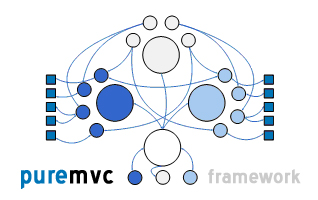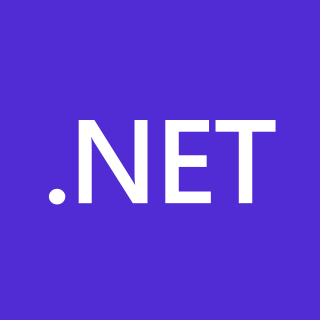Visual Basic for Applications (VBA) is an implementation of Microsoft's event-driven programming language Visual Basic 6.0 built into most desktop Microsoft Office applications. Although based on pre-.NET Visual Basic, which is no longer supported or updated by Microsoft, the VBA implementation in Office continues to be updated to support new Office features. VBA is used for professional and end-user development due to its perceived ease-of-use, Office's vast installed userbase, and extensive legacy in business.
Java Platform, Standard Edition is a computing platform for development and deployment of portable code for desktop and server environments. Java SE was formerly known as Java 2 Platform, Standard Edition (J2SE).

In computer science, a library is a collection of non-volatile resources used by computer programs, often for software development. These may include configuration data, documentation, help data, message templates, pre-written code and subroutines, classes, values or type specifications. In IBM's OS/360 and its successors they are referred to as partitioned data sets.
This article compares two programming languages: C# with Java. While the focus of this article is mainly the languages and their features, such a comparison will necessarily also consider some features of platforms and libraries. For a more detailed comparison of the platforms, see Comparison of the Java and .NET platforms.

C# is a general-purpose high-level programming language supporting multiple paradigms. C# encompasses static typing, strong typing, lexically scoped, imperative, declarative, functional, generic, object-oriented (class-based), and component-oriented programming disciplines.
An application domain is a mechanism used within the Common Language Infrastructure (CLI) to isolate executed software applications from one another so that they do not affect each other. Each application domain has its own virtual address space which scopes the resources for the application domain using that address space.
Microsoft Transaction Server (MTS) was software that provided services to Component Object Model (COM) software components, to make it easier to create large distributed applications. The major services provided by MTS were automated transaction management, instance management and role-based security. MTS is considered to be the first major software to implement aspect-oriented programming.
Platform Invocation Services, commonly referred to as P/Invoke, is a feature of Common Language Infrastructure implementations, like Microsoft's Common Language Runtime, that enables managed code to call native code.
In Microsoft Windows applications programming, OLE Automation is an inter-process communication mechanism created by Microsoft. It is based on a subset of Component Object Model (COM) that was intended for use by scripting languages – originally Visual Basic – but now is used by several languages on Windows. All automation objects are required to implement the IDispatch interface. It provides an infrastructure whereby applications called automation controllers can access and manipulate shared automation objects that are exported by other applications. It supersedes Dynamic Data Exchange (DDE), an older mechanism for applications to control one another. As with DDE, in OLE Automation the automation controller is the "client" and the application exporting the automation objects is the "server".
.NET Remoting is a Microsoft application programming interface (API) for interprocess communication released in 2002 with the 1.0 version of .NET Framework. It is one in a series of Microsoft technologies that began in 1990 with the first version of Object Linking and Embedding (OLE) for 16-bit Windows. Intermediate steps in the development of these technologies were Component Object Model (COM) released in 1993 and updated in 1995 as COM-95, Distributed Component Object Model (DCOM), released in 1997, and COM+ with its Microsoft Transaction Server (MTS), released in 2000. It is now superseded by Windows Communication Foundation (WCF), which is part of the .NET Framework 3.0.
Charm++ is a parallel object-oriented programming paradigm based on C++ and developed in the Parallel Programming Laboratory at the University of Illinois at Urbana–Champaign. Charm++ is designed with the goal of enhancing programmer productivity by providing a high-level abstraction of a parallel program while at the same time delivering good performance on a wide variety of underlying hardware platforms. Programs written in Charm++ are decomposed into a number of cooperating message-driven objects called chares. When a programmer invokes a method on an object, the Charm++ runtime system sends a message to the invoked object, which may reside on the local processor or on a remote processor in a parallel computation. This message triggers the execution of code within the chare to handle the message asynchronously.
The Microsoft Windows operating system supports a form of shared libraries known as "dynamic-link libraries", which are code libraries that can be used by multiple processes while only one copy is loaded into memory. This article provides an overview of the core libraries that are included with every modern Windows installation, on top of which most Windows applications are built.
A database connection is a facility in computer science that allows client software to talk to database server software, whether on the same machine or not. A connection is required to send commands and receive answers, usually in the form of a result set.

PureMVC is a software framework for creating applications based on the well-established model–view–controller (MVC) design pattern. It was originally implemented in the ActionScript 3 language for use with Adobe Flex, Flash, and AIR, and it has since been ported to nearly all major web development platforms. It is free and open-source software released under a BSD 3-clause license.
Component Object Model (COM) is a binary-interface standard for software components introduced by Microsoft in 1993. It is used to enable inter-process communication object creation in a large range of programming languages. COM is the basis for several other Microsoft technologies and frameworks, including OLE, OLE Automation, Browser Helper Object, ActiveX, COM+, DCOM, the Windows shell, DirectX, UMDF and Windows Runtime. The essence of COM is a language-neutral way of implementing objects that can be used in environments different from the one in which they were created, even across machine boundaries. For well-authored components, COM allows reuse of objects with no knowledge of their internal implementation, as it forces component implementers to provide well-defined interfaces that are separated from the implementation. The different allocation semantics of languages are accommodated by making objects responsible for their own creation and destruction through reference-counting. Type conversion casting between different interfaces of an object is achieved through the QueryInterface method. The preferred method of "inheritance" within COM is the creation of sub-objects to which method "calls" are delegated.
Wrapper libraries consist of a thin layer of code which translates a library's existing interface into a compatible interface. This is done for several reasons:

The .NET Framework is a proprietary software framework developed by Microsoft that runs primarily on Microsoft Windows. It was the predominant implementation of the Common Language Infrastructure (CLI) until being superseded by the cross-platform .NET project. It includes a large class library called Framework Class Library (FCL) and provides language interoperability across several programming languages. Programs written for .NET Framework execute in a software environment named the Common Language Runtime (CLR). The CLR is an application virtual machine that provides services such as security, memory management, and exception handling. As such, computer code written using .NET Framework is called "managed code". FCL and CLR together constitute the .NET Framework.
Windows Runtime (WinRT) is a platform-agnostic component and application architecture first introduced in Windows 8 and Windows Server 2012 in 2012. It is implemented in C++ and officially supports development in C++, Rust/WinRT, Python/WinRT, JavaScript-TypeScript, and the managed code languages C# and Visual Basic .NET (VB.NET).

Mono is a free and open-source .NET Framework-compatible software framework. Originally by Ximian, it was later acquired by Novell, and is now being led by Xamarin, a subsidiary of Microsoft and the .NET Foundation. Mono can be run on many software systems.
Kubernetes is an open-source container orchestration system for automating software deployment, scaling, and management. Originally designed by Google, the project is now maintained by the Cloud Native Computing Foundation.



